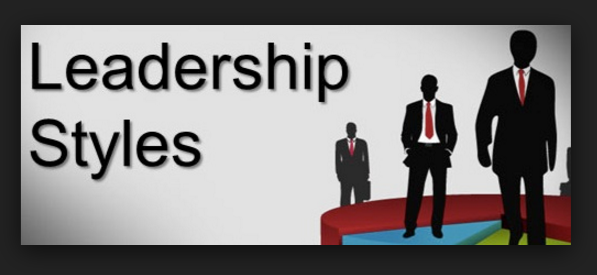President Eisenhower knew a thing or two about leadership styles, didn’t he?

He knew the importance of the types of leadership styles. And the importance of building an effective team in both the military and government. What about you and your business?
Check out our thoughts on team leverage.
Leadership is the art of getting someone else to do something you want to be done because he wants to do it.
Dwight Eisenhower
An important leadership competency for any size organization, the ability to build and lead high performing teams is critical in small-to-midsize businesses.
Here, people must work closely together, wear many hats and work effectively across the organization to get tasks accomplished quickly enough to remain competitive.
Before we continue, let me ask you a question.
What works best for team building in your business? We would love to hear what it was. Would you do us a favor and post it in the comments section below? It would be greatly appreciated by us and our readers.
In order to understand the competencies needed to build and lead high-performance teams, it is helpful to first define a team.
Here is a short video on the leadership lessons from first follower.
Here is a simple but effective description from The Wisdom of Teams (Harvard Business School Press, 1993.)
“A team is a small number of people with complementary skills. They are committed to a common purpose, performance goals, and approach for which they hold themselves mutually accountable.”
An effective team has certain characteristics that allow the team members to function more efficiently and productively.
They develop ways to share leadership roles. They look for ways to share accountability for their work products. This will shift the emphasis from the individual to several individuals within the team.
Related post: How to Create the Best Leadership Accountability
Building and maintaining effective teams is a time consuming and sensitive process. This is particularly true in businesses where the pressures of the moment are often intense.
It takes strong leadership skills and styles. Leaders should have two main concerns: people and production.
High concern for people motivates the team and they become more productive. High concern for production creates a sense of achievement and satisfaction.
In my 35 years in business leadership, here are the leadership styles I have found most successful at building effective teams:
Leadership styles … commander
Commanders make and influence most decisions. The downside of this leadership style is that the leader can de-motivate and annoy people.
Often decisions are not optimal. Commanders usually don’t consider all available information, options, and perspectives.
This style can be effective in short-term situations where time is critical.
In the long-term, however, I have found it to be very disruptive. Disruptive in terms of the people and the effort.
Democratic leadership styles … coach
The coach is needed when a team lacks focus, expertise, and understanding of what should be done and how.
Coaches tend to be concerned with growing people, creating and enabling a trusting environment. They encourage personal growth. They look to build long-term capabilities in an effort to prepare the team and individuals for independent work.
This leader makes decisions collectively with a team while explaining the rationale behind decisions. They listen and provide feedback.
Supporter
The goal of supporters is to help remove barriers and coordinate activities. They tend to be a humble, quiet leader and facilitator.
They tend to make joint decisions with the team as equals, delegating majority of decisions to the team.
The supporter has a high concern about the creation of harmony and balance between team members.

Self-organizing team
A motivated and confident team often functions quite well without formal leaders.
The team makes most decisions. Any member could step in and become a leader in specific areas and situations.
People on these teams tend to be highly capable, committed and self-driven.
Frequently these teams are self-made and become truly self-organized. This is particularly true after experiencing victories and failures, growing and gaining experience together.
In my experience, I have found myself most often operating between a coach and supporter team building leader.
Both can be very effective. If teams stay together for multiple projects, the goal as either a coach or supporter is to transition the team to operate on their own as a self-organizing team.
The bottom line
In many situations, leaders focus on promoting good understanding. They seek to ensure adequate knowledge and facilitation for effective interaction.
They watch for the transformation of their job from one that required supervision and oversight, to one that allows the leader to focus on serving the needs of the team and each individual team member.

What about your abilities to shape your team building? What type of leadership styles do you use? What key experiences can you share with this community?
Need some help in capturing more improvements in your staff’s leadership, teamwork, and collaboration? Creative ideas in running or facilitating a team or leadership workshop?
All you get is what you bring to the fight. And that fight gets better every day you learn and apply new ideas.
When things are not what you want them to be, what’s most important is your next step.
Test. Learn. Improve. Repeat.
Are you devoting enough energy to innovating your social media strategy?
Do you have a lesson about making your advertising better you can share with this community? Have any questions or comments to add in the section below?
Digital Spark Marketing will stretch your thinking and your ability to adapt to change. We also provide some fun and inspiration along the way.
More leadership material from Digital Spark Marketing’s Library:
Build an Effective Team by Being a Talent Hound
Success Enablers of Highly Creative Leaders
Secrets to Becoming a Remarkably Mindful Leader
Leadership Characteristics That Improve Influence |

This is a very useful resource to help leaders build an effective team. Additionally, it is also important for leaders to promote teamwork and cooperation by organizing team bonding activities.